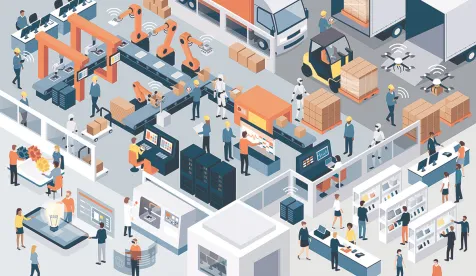Companies in the manufacturing industry must continue to keep a close eye on the “S” in ESG. One key aspect of the “social” component of ESG involves respecting human rights in supply chains. Indeed, manufacturers are facing heightened expectations—from government enforcement agencies, consumers, and other stakeholders—to ensure that their supply chains don’t include any products made using forced or child labor. This trend is accelerating and forward-thinking manufacturers should be focused on this issue.
Compliance and Reputational Risks
Both enforcement agencies and consumers are increasingly focused on manufacturers’ supply chains. Manufacturers must understand that human-rights-enforcement frameworks increasingly have real teeth. As we’ve detailed here, both the United States and the European Union either have or in the process of adopting real enforcement mechanisms to protect against the importation of goods made using forced labor. In 2023, we expect heightened enforcement in the U.S. of the Uyghur Forced Labor Prevention Act. As a sign of things to come, Germany’s Supply Chain Due Diligence Act and Norway’s recent Transparency Act impose affirmative human-rights-due-diligence obligations on companies and create an enforcement structure with severe penalties for non-compliance.
As important, manufacturers will face tangible reputational risks if forced-labor issues are exposed in their supply chains. When Joe Rogan is talking about forced labor in supply chains, you can bet the subject has become of mainstream significance. As transparency in supply chains increases and issues are exposed (whether by government seizures, consumer-focused-compliance-assessment tools, or media exposure), media and consumers have more data at their fingertips. And, according to one recent survey, that information matters: 60% of consumers have said that they would switch products if they knew human trafficking or forced labor was used to create it. So the consumer base—and, hence, the bottom line—will become more acutely at risk for manufacturers who fail to properly assess their supply chains.
Managing Risk in Your Supply Chain
These paradigms highlight an important fact: It’s not good enough to just check the compliance boxes to show stakeholders that your company is socially responsible. So what should manufacturers do to address this risk? It’s important to start with an understanding of your supply chain and an assessment of its human-rights risks. You are expected to know what goes into your products and where it comes from. And for components sourced in high-risk countries and that emerge from high-risk industries, you are expected to take reasonable steps to ensure that you have vetted your suppliers (and their suppliers and their suppliers’ suppliers and so on . . .), that you have made sure they understand your compliance expectations and are contractually obligated to comply, and that you monitor and audit them to ensure they are in compliance.






 />i
/>i
